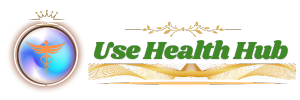Genetic testing in cardiology is breaking new ground. It’s akin to navigating the complex spider veins Manhattan is known for, yet instead of city streets, we’re charting the intricate pathways of our genes. This isn’t just about understanding our heart health as it stands now. It’s also about unearthing the secrets of our past and casting light on our future. This is a new frontier worth exploring.
Our genes hold the blueprint for our well-being. They may reveal vulnerabilities we carry for heart disease. Knowing these vulnerabilities can change the game—offering us a chance to intervene early.
The Role of Genetic Testing in Cardiology
Genetic testing is a tool that uncovers these secrets. It’s like a map that directs us, allowing us to see the risk zones for heart disease. Some heart conditions are passed down in families. By finding the genetic cause, we can provide targeted care for those at risk.
How Genetic Testing Works
Genetic tests use a sample of your blood or saliva. Labs then analyze your DNA for mutations linked to heart disease. This process is non-invasive and simple. But it can offer life-saving insights.
Benefits and Limitations
Like any tool, genetic testing has its pros and cons. Here is a comparison to help understand them:
| BENEFITS | LIMITATIONS |
| Can identify unseen risk factors | Not all genetic links to heart disease are known |
| Early intervention is possible | May cause unnecessary worry in some cases |
| Helps in family planning | Doesn’t replace the need for regular health checks |
Is Genetic Testing Right for You?
The decision to get a genetic test is personal. It should be made with your doctor. Together, you can weigh the pros and cons. You can consider your family history and your own health. Remember, knowledge is power. In the words of Francis Bacon, “Knowledge itself is power”.
Genetic testing in cardiology is a new frontier. It opens doors to understanding our heart health in ways we haven’t before. It’s like standing on a skyscraper, looking down at the spider veins of Manhattan, and seeing the whole city for the first time. It’s a new view, a new understanding, and a new hope for heart health.

